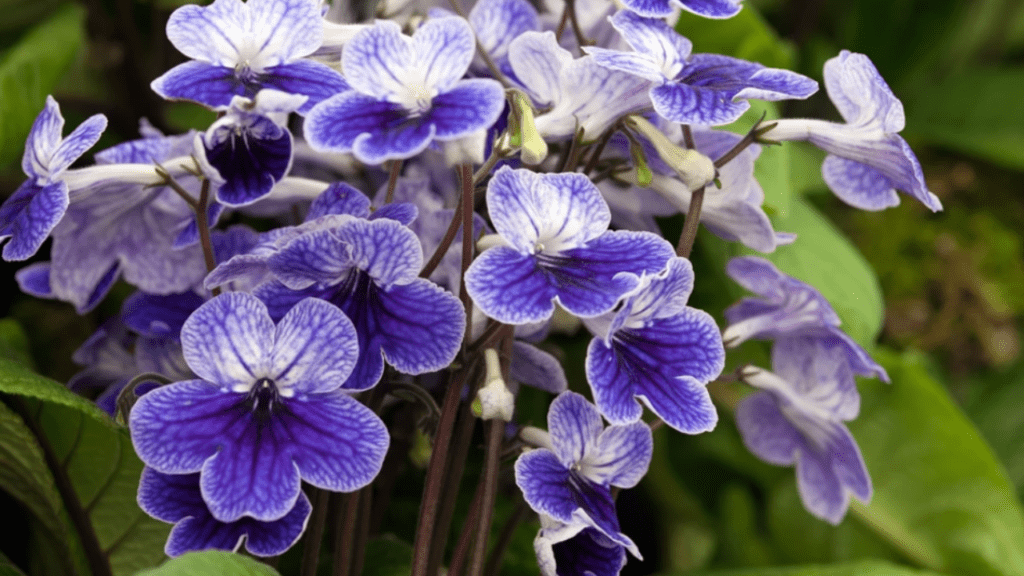
The Ultimate Guide to Streptocarpus Plant: Growing, Care, and Propagation
Are you ready to take your gardening skills to the next level? If you’ve been looking for the ultimate guide to caring for Streptocarpus plants, look no further. This comprehensive guide has everything you need to know about growing, caring for, and propagating these beautiful plants. Whether you’re a seasoned gardener or just starting out, this guide will provide you with all the information you need to ensure your Streptocarpus plants thrive. So let’s dive in and take your gardening game to the next level!
Table of Contents
ToggleWhat is a Streptocarpus Plant?
Streptocarpus plants, also known as Cape Primrose, are a beautiful and popular houseplant that is known for its stunning flowers and easy-care nature. These plants are native to South Africa and belong to the Gesneriaceae family. They are known for their large, trumpet-shaped flowers that come in a wide range of colors, including shades of purple, pink, blue, and white.
Streptocarpus plants are relatively easy to care for and can thrive indoors as long as they are provided with the right growing conditions. They prefer bright, indirect light and well-draining soil. It’s important to keep the soil consistently moist but not waterlogged and to avoid getting water on the leaves to prevent rot and disease.
When it comes to propagation, Streptocarpus plants can be easily propagated from leaf cuttings or by dividing the plant at the roots. With the right care and attention, these plants can provide you with beautiful blooms year-round.
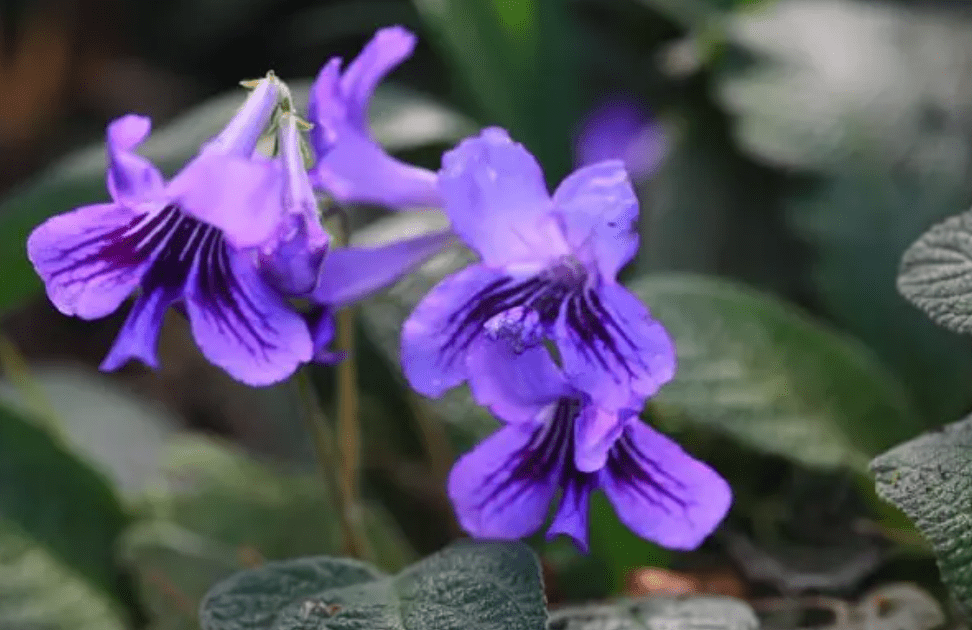
So whether you’re a seasoned gardener looking to expand your plant collection or a beginner looking for an easy-care houseplant, Streptocarpus plants are a great choice. With the proper care and attention, these plants will reward you with stunning blooms and add a touch of beauty to your home. So why not give Streptocarpus plants a try and take your gardening skills to the next level?
Popular Varieties of Streptocarpus
Highlight several popular varieties.
There are several popular varieties of Streptocarpus plants that you can choose from to add a pop of color and beauty to your home. Some popular varieties include the Streptocarpus Polka-Dot Purple, which features stunning purple and white flowers, and the Streptocarpus Harlequin Blue, which has striking blue and white blooms. Another popular variety is the Streptocarpus Concord Blue, which boasts beautiful blue flowers with a hint of purple. These plants are easy to care for and can thrive in a variety of environments, making them a great addition to any indoor garden. So why not give one of these popular varieties a try and brighten up your living space with the beauty of Streptocarpus plants?
Provide images and brief descriptions for each variety.
The Streptocarpus Polka-Dot Purple is a stunning variety with vibrant purple and white flowers that will add a pop of color to any room. The Streptocarpus Harlequin Blue features striking blue and white blooms that will make a beautiful addition to your indoor garden. The Streptocarpus Concord Blue boasts gorgeous blue flowers with a hint of purple, adding a touch of elegance to your living space. These popular varieties of Streptocarpus plants are easy to care for and can thrive in a variety of environments, making them the perfect choice for any gardener looking to add a splash of color and beauty to their home. So why not give Streptocarpus plants a try and take your gardening skills to the next level with one of these stunning varieties?
Growing Streptocarpus Plant Indoors
Ideal indoor growing conditions: light, temperature, and humidity.
Indoor growing conditions are crucial for the health and growth of your plants. Providing the right amount of light, temperature, and humidity is essential for creating the ideal environment for your indoor garden. Streptocarpus plants, in particular, thrive in bright, indirect light and prefer temperatures between 65-75°F. They also require high humidity levels, so it’s important to keep the air moist, especially during the drier winter months.
When it comes to light, make sure to place your Streptocarpus plants in a location where they can receive plenty of bright, indirect light. Avoid direct sunlight as it can scorch the leaves. If natural light is limited, you can also supplement with artificial grow lights to ensure your plants get the light they need to thrive.
In terms of temperature, it’s important to maintain a consistent, moderate temperature for your Streptocarpus plants. Avoid exposure to drafts or extreme temperature fluctuations, as this can stress the plants and hinder their growth.
Lastly, humidity is key for Streptocarpus plants. You can increase humidity levels by placing a tray of water or a humidifier near your plants, or by regularly misting the leaves with water. This will help create the moist environment that Streptocarpus plants love.
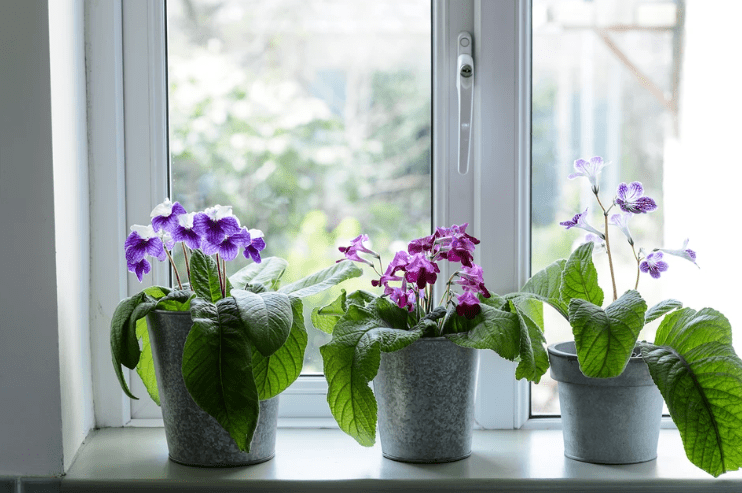
By providing the right growing conditions for your indoor plants, you can ensure that they not only survive but thrive. With the proper care and attention, your indoor garden can be a beautiful and vibrant addition to your home. So, don’t hesitate to create the perfect environment for your Streptocarpus plants and watch them flourish in the comfort of your own home.
Potting mix and container requirements.
When it comes to potting mix and containers for your plants, it’s important to choose the right ones to promote healthy growth and beautiful blooms. First, make sure to use a well-draining potting mix that is specifically designed for indoor plants. This will help prevent waterlogging and root rot, which can be detrimental to your plants. Additionally, choose containers that have drainage holes to allow excess water to escape and prevent water buildup at the bottom of the pot. This will also help to avoid root rot and ensure that your plants have the oxygen and nutrients they need to thrive. It’s also important to ensure that the containers you choose are the right size for your plants, allowing for adequate root space and growth. By providing the right potting mix and containers for your indoor plants, you can set them up for success and enjoy a lush and vibrant indoor garden.
Watering schedule and tips for avoiding overwatering.
When it comes to watering your indoor plants, it’s important to establish a consistent watering schedule that takes into account the specific needs of each plant. Overwatering can lead to root rot and other issues, so it’s important to water your plants carefully. One tip for avoiding overwatering is to check the moisture level of the soil before watering. Stick your finger into the soil and if it feels dry about an inch below the surface, it’s time to water. Make sure to water your plants thoroughly, allowing the excess water to drain out of the bottom of the pot. It’s also important to use pots with drainage holes to prevent water from accumulating at the bottom and leading to overwatering. By following a proper watering schedule and being mindful of the moisture level in the soil, you can help your indoor plants thrive and avoid the pitfalls of overwatering.
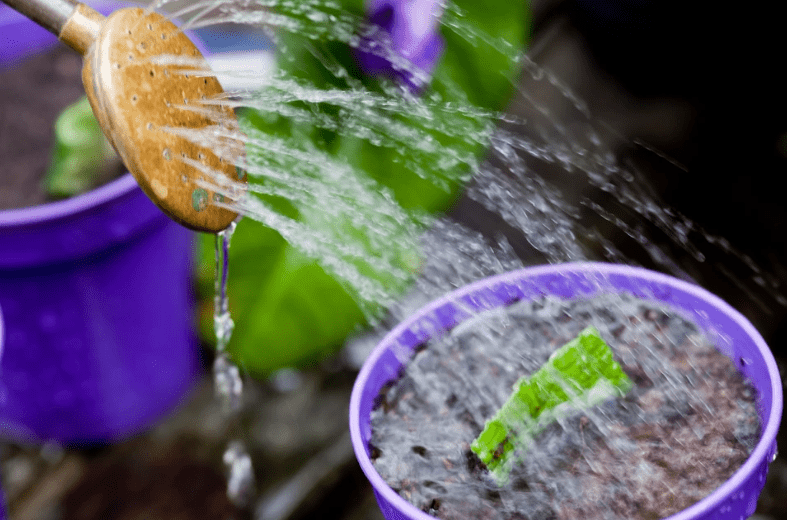
Streptocarpus Plant Care Tips
Fertilization: When and how to feed the plant.
Fertilization is an essential part of plant care that can help your indoor plants to thrive and grow healthy. It’s important to feed your plants with the right nutrients at the right time to support their growth and development. When it comes to fertilizing your plants, it’s best to do so during the growing season, which is typically in the spring and summer months. This is when your plants are actively growing and will benefit the most from the added nutrients. Before fertilizing, make sure to water your plants thoroughly to avoid burning the roots with the fertilizer. Use a balanced, water-soluble fertilizer and follow the instructions on the packaging for the correct dilution and application method. It’s important not to over-fertilize, as this can cause damage to your plants. Always err on the side of caution and use less fertilizer than recommended if you’re unsure. By feeding your plants with the right nutrients at the right time, you can help them to flourish and thrive, ensuring beautiful and healthy indoor plants.
Pruning and deadheading to encourage blooming.
Pruning and deadheading are essential tasks for encouraging blooming in your plants. By removing dead or dying flowers and branches, you can help redirect the plant’s energy into producing new blooms. This will not only improve the overall appearance of your plants but also promote healthier growth. When deadheading, make sure to cut the stem just above a set of healthy leaves or buds to encourage new growth. Pruning, on the other hand, involves removing any dead, damaged, or overgrown branches to improve the plant’s overall shape and structure. This will also allow more sunlight and airflow to reach the plant, promoting better growth and blooming. So, don’t neglect the importance of pruning and deadheading in your gardening routine. It’s a simple yet effective way to ensure your plants continue to bloom beautifully.
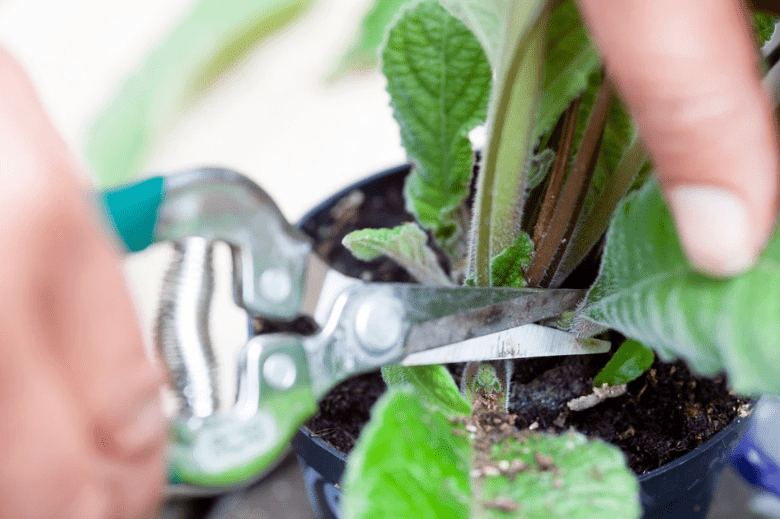
Common pests and diseases to watch out for and how to manage them.
It’s important to keep an eye out for common pests and diseases in your garden to ensure the health and vitality of your plants. Some common pests to watch out for include aphids, spider mites, and whiteflies. These pests can damage your plants by feeding on their leaves and stems, ultimately affecting their growth and blooming. To manage these pests, you can use natural remedies such as neem oil or insecticidal soap to keep them at bay. Additionally, regularly inspecting your plants for any signs of infestation and promptly addressing the issue can help prevent the spread of pests.
In terms of diseases, common ones to watch out for include powdery mildew, leaf spot, and root rot. These diseases can weaken your plants and hinder their ability to bloom. To manage these diseases, it’s important to practice good gardening hygiene by removing any infected plant material and ensuring proper air circulation around your plants. You can also use organic fungicides to help control the spread of disease. By staying vigilant and proactive in managing pests and diseases, you can help ensure the health and vitality of your garden and enjoy beautiful blooms all season long.
Propagating Streptocarpus Plant
Methods of propagation: leaf cuttings, division, and seeds.
Propagating your Streptocarpus plants can be a fun and rewarding experience. There are several methods of propagation that you can use to grow new plants from your existing ones. One method is leaf cuttings, where you carefully remove a healthy leaf from the mother plant and place it in a growing medium to encourage the growth of new roots. Another method is division, where you carefully separate the clumps of the mother plant and transplant them into their own pots. Lastly, you can also propagate Streptocarpus plants by collecting and planting their seeds. Each method has its own unique benefits and challenges, so it’s important to do your research and choose the method that best suits your needs and preferences. By exploring different methods of propagation, you can expand your collection of Streptocarpus plants and share the beauty of these stunning flowers with others. So don’t be afraid to take on the challenge of propagating your Streptocarpus plants and set goals for yourself to grow a thriving and diverse garden.
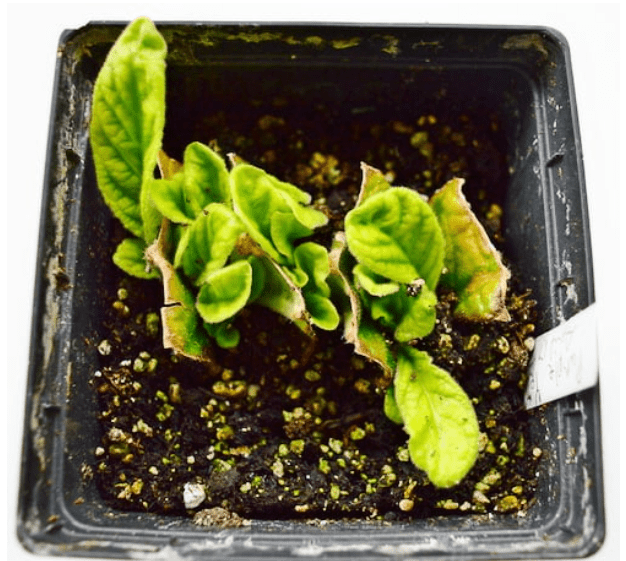
Step-by-step guide on propagating from leaf cuttings.
Propagating plants from leaf cuttings is a great way to expand your garden and share the beauty of your plants with others. It’s a simple and effective method that can yield great results. First, you’ll want to carefully select a healthy leaf from the mother plant, making sure it is free from any damage or disease. Then, you’ll want to cut the leaf at a 45-degree angle and remove any excess stem. Next, you’ll need to place the leaf in a pot with a well-draining growing medium, such as a mix of perlite and peat moss. It’s important to keep the soil moist but not waterlogged, and provide the cutting with indirect sunlight to encourage root growth. In a few weeks, you should start to see new roots forming, and once the cutting has established a healthy root system, you can transplant it into its own pot. By following these simple steps, you can successfully propagate new plants from leaf cuttings and expand your garden with beautiful, healthy plants. So don’t be afraid to take on the challenge of propagating from leaf cuttings and set goals for yourself to grow a thriving and diverse garden.
Best time to propagate and aftercare tips for young plants.
Propagating new plants from leaf cuttings is a great way to expand your garden and add more greenery to your space. The best time to propagate plants from leaf cuttings is during the spring and summer months when the plants are actively growing. This is when the plants are at their strongest and best able to produce new roots from the cuttings.
After taking the leaf cuttings, it’s important to provide them with the proper aftercare to ensure their success. Make sure to keep the soil consistently moist but not waterlogged, as this can cause the cuttings to rot. Additionally, provide the cuttings with indirect sunlight to encourage root growth and avoid placing them in direct sunlight, which can cause them to dry out.
As the cuttings begin to develop new roots, you can carefully transplant them into their own pots with well-draining soil. Keep a close eye on the new plants and continue to provide them with the care they need to grow and thrive.
By following these steps and setting goals for yourself to successfully propagate new plants from leaf cuttings, you can expand your garden and create a beautiful and diverse array of plants. Don’t be afraid to take on the challenge and watch your garden flourish with healthy new additions.
In conclusion, growing and caring for Streptocarpus plants can be a rewarding and enjoyable experience for any gardener. With the right knowledge and care, you can watch your Streptocarpus plants thrive and bloom beautifully. Whether you’re a beginner or an experienced gardener, this ultimate guide will provide you with all the information you need to successfully grow and care for your Streptocarpus plants. So, why wait? Start growing and caring for these beautiful plants today and enjoy the beauty they bring to your home.
Frequently asked questions And Answer
The best way to grow a Streptocarpus plant is to provide it with well-draining soil, bright indirect light, and regular watering. It also thrives in humid conditions, so misting the leaves can be beneficial.
It’s important to keep the soil consistently moist but not waterlogged. Water your Streptocarpus plant when the top inch of soil feels dry to the touch, and make sure to use room temperature water to avoid shocking the plant.
In addition to regular watering, a Streptocarpus plant benefits from occasional fertilization during the growing season and regular grooming to remove spent flowers and yellowing leaves. It also prefers to be kept away from drafts and strong air currents.
Yes, you can easily propagate a Streptocarpus plant by dividing the plant at the root and replanting the sections in fresh soil. You can also propagate it from leaf cuttings by placing the cuttings in water until they develop roots, then transferring them to soil.
Common issues that can affect a Streptocarpus plant include overwatering, which can lead to root rot, and underwatering, which can cause the plant to wilt. It is also susceptible to pests such as aphids and mealybugs, so regular inspection is important.
Streptocarpus plants prefer temperatures between 60-80°F (15-27°C). They are sensitive to cold temperatures and should be protected from drafts and sudden temperature changes.
With proper care, a Streptocarpus plant can live for several years and produce beautiful blooms throughout its lifespan. Regular grooming and maintenance can help to prolong its life.
Streptocarpus plants can be kept outdoors in mild, humid climates, but they should be protected from direct sunlight and strong winds. It’s important to monitor the conditions and bring the plant indoors if the weather becomes too extreme.
